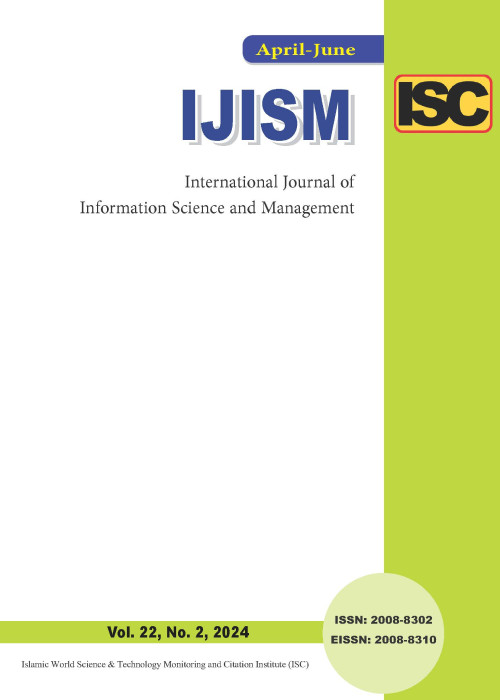Presenting A Model For Distributing Books in Iran Based on Structural Equation Models
The present study was conducted to provide a suitable model for book distribution in Iran. This research is applied in terms of purpose, and the research method is mixed (qualitative: grounded theory; and quantitative: analytical survey). The data were collected through a series of semi-structured interviews at the qualitative stage. The population of the qualitative section consisted of 10 book distribution experts who were selected by using the snowball method; for the second population, 118 book distributors were purposefully selected, and the research questionnaire was distributed among them. The MAXQDA software was used to determine the qualitative section's concepts, categories, and subcategories. Then the paradigm of book distribution in Iran was identified. The model was determined using PLS software in the form of descriptive statistics and structural equation modeling in the quantitative section. In the qualitative section, the five cultural, economic, legal and political, substructural, and professional factors were identified; the results of the quantitative section showed that the cultural dimension had a weak relationship with distribution factors, and the relationship was vital for other dimensions. It can be said that the cultural dimension has the lowest intensity of the relationship, and the substructural dimension, economic dimension, professional dimension, and legal and political dimension have the highest intensity correlation with distribution factors, respectively. The most influential factors influencing book distribution were the lack of reading culture, inadequate distribution, unprofitability, weak rules, and unprincipled publishing support. The most effective way to improve the distribution was to strengthen the professional distributors. Distribution channels of goods and cultural services in Iran are mainly traditional. Moreover, the traditional distribution network, lack of use of new technologies, the long flow path of goods, the minimal share of bookstores in the distribution system, weakness of distribution substructures, lack of manpower skills in the distribution sector, and lack of capable public and private distribution networks cause inefficiency of the book distribution network and result in consumer dissatisfaction.
- حق عضویت دریافتی صرف حمایت از نشریات عضو و نگهداری، تکمیل و توسعه مگیران میشود.
- پرداخت حق اشتراک و دانلود مقالات اجازه بازنشر آن در سایر رسانههای چاپی و دیجیتال را به کاربر نمیدهد.



